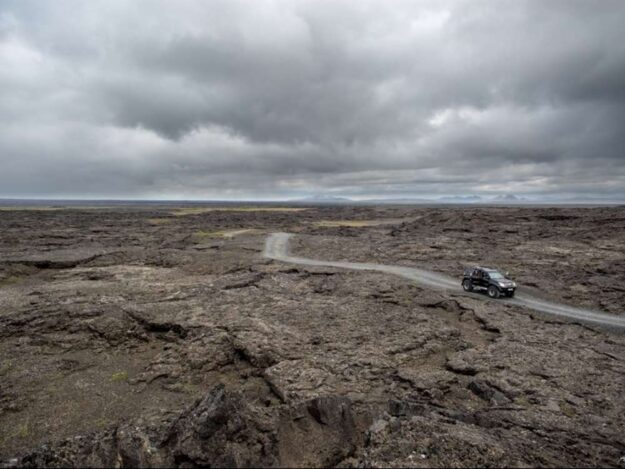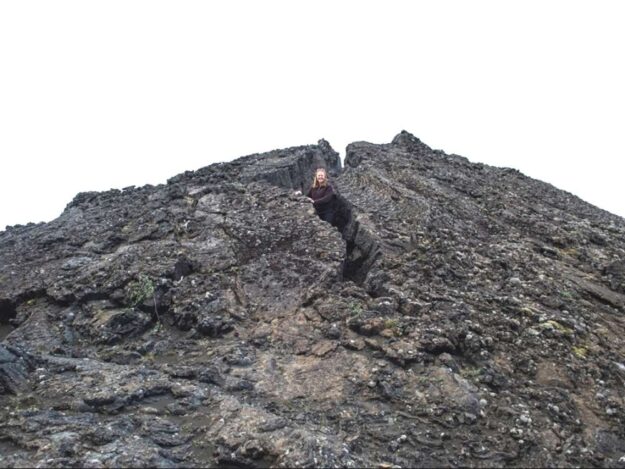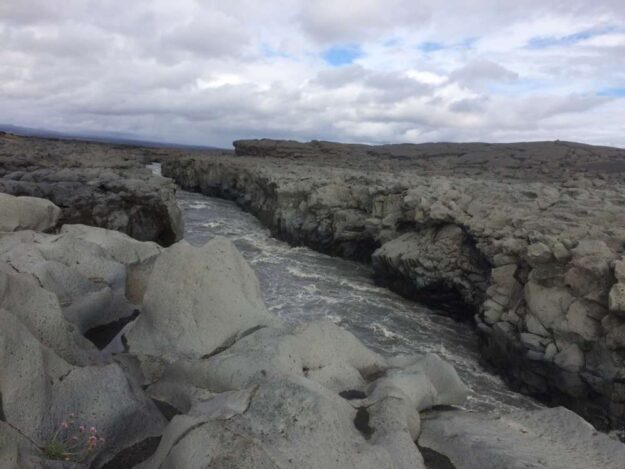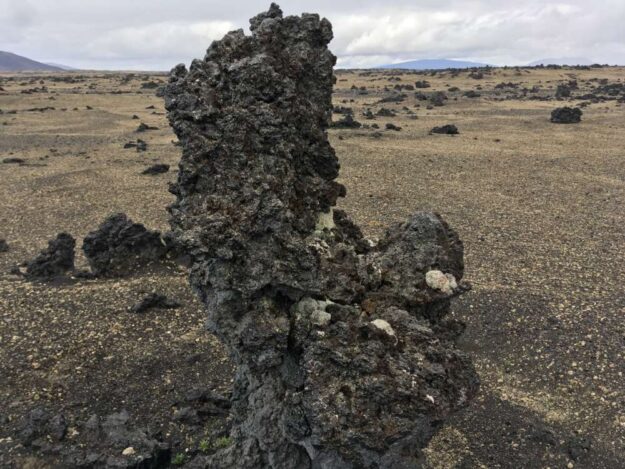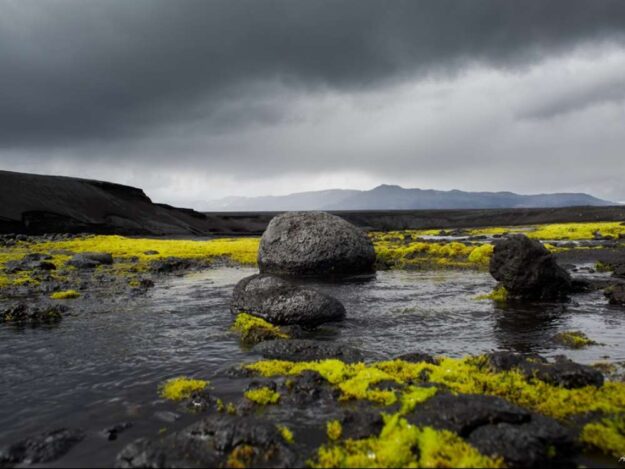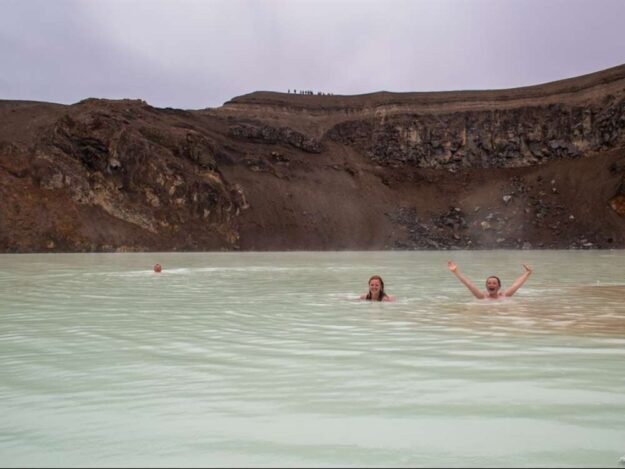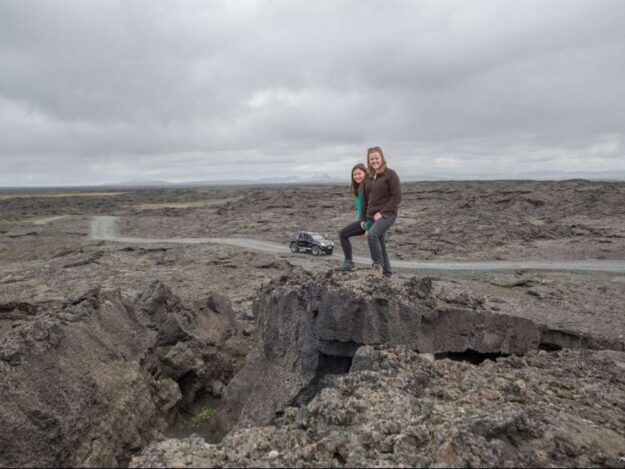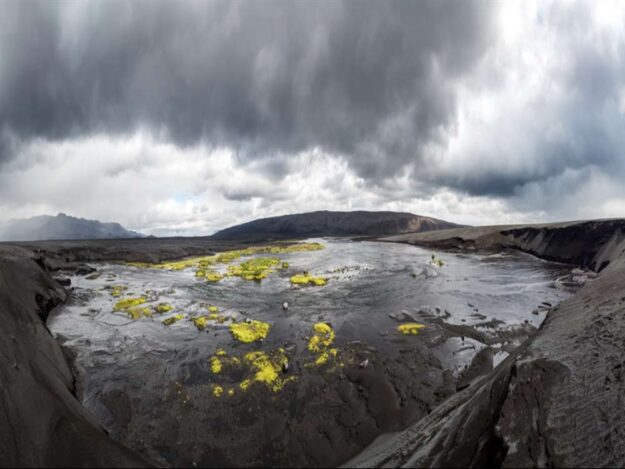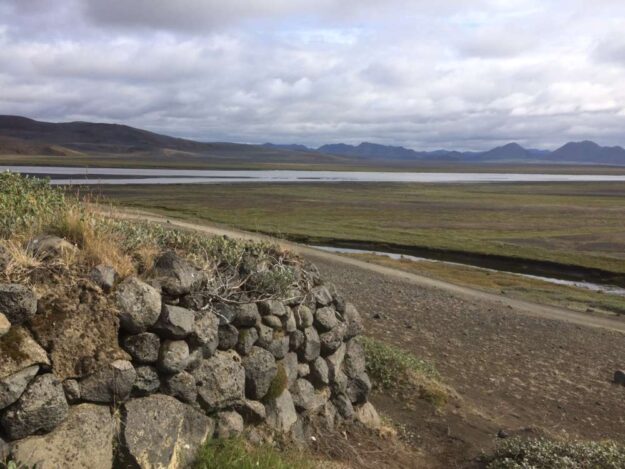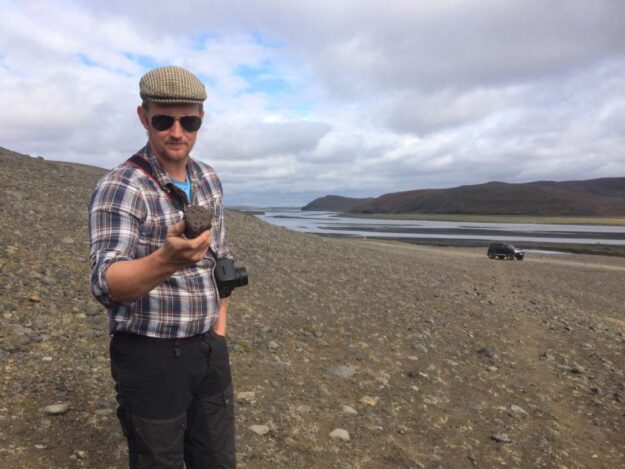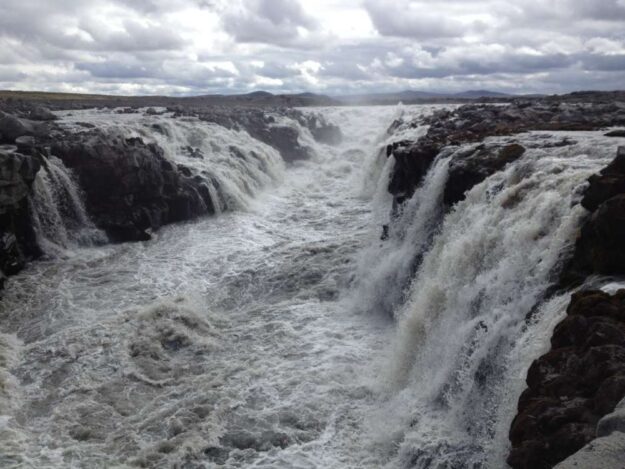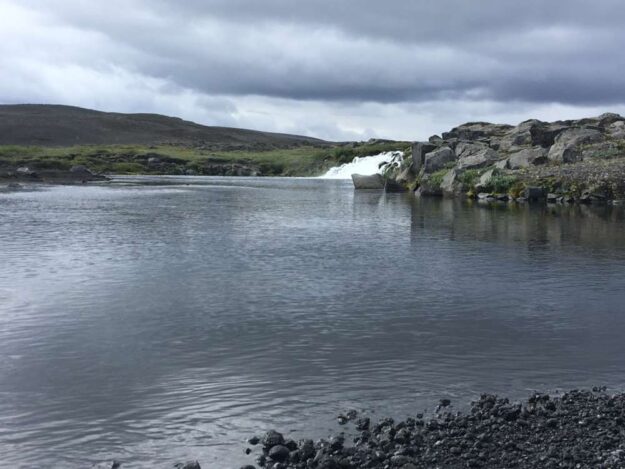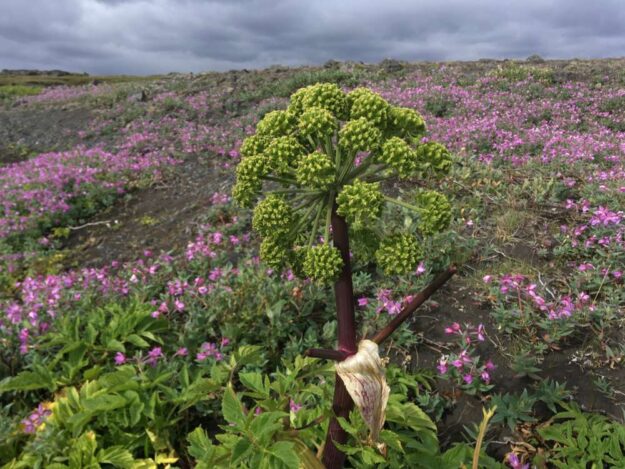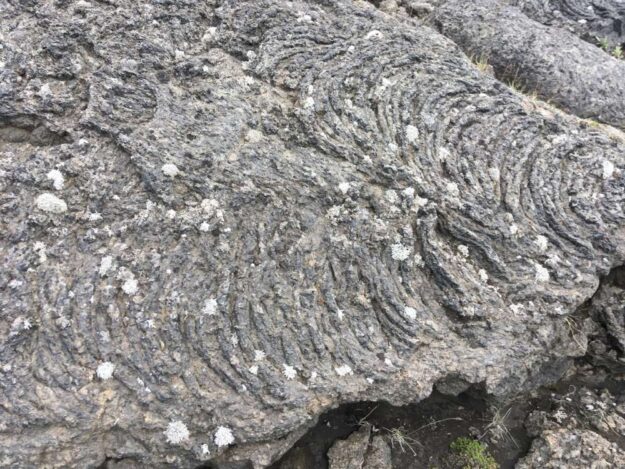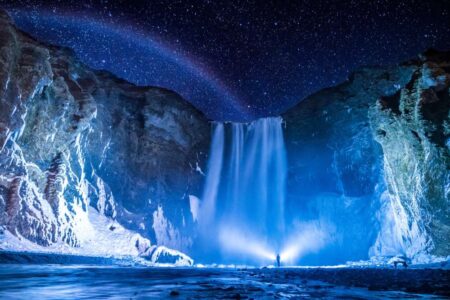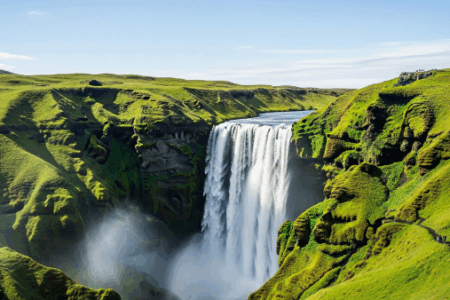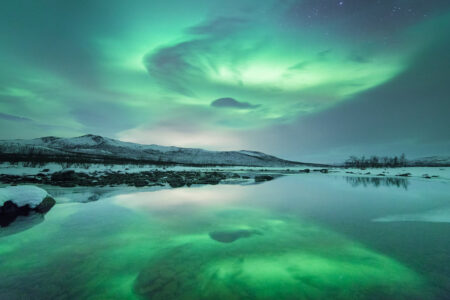A 12 hour super-jeep tour into the Icelandic highlands is an opportunity not to be missed. Anton was our expert guide for the day, a geology/chemistry/meteorology (to name just a few)-geek, bursting with enthusiasm and exciting stories of volcanic eruptions, rescuing tourists who tackle fast flowing rivers in ford fiestas, and crazy scientists who push the laws of nature to the edge.
We set off not really knowing where we were going or what was in store. All we knew was the end goal was Askja, a giant 200km long and 20km wide volcanic system, the longest of its kind in Iceland. Little did we realise the geological gems that we were to visit on the way. The landscapes were constantly changing, each a stark contrast to the previous one just 30 minutes earlier. We drove past endless lava fields, some being more than 3000 years old, past giant fissures, fields of pumice, and moon-like terrains, visible evidence of an explosive volcanic history. A particular highlight was the beautiful pahoehoe lava, its swirls artistically etched across the rock.
At a spring we refilled our bottles with the most delicious crystal-clear and refreshingly chilled water ever tasted. We crossed the Grafarlandaá and Lindá rivers, both spring fed with clear mountain water, and watched a broken-down truck get towed out of the river. A common occurrence in the area – idiots who think their cars can survive the torrent! Our spot for lunch was the most unique and abstract of all localities. We jumped out of the jeep to see nothing but a black desert over 100km in width, stretching to the mountains on the horizon, and not a soul in sight. Sadly no 360 degree photo does this incredible vista justice. The vast expanse of nothingness, no plant life, and no water, is mind-blowing. It was so random, so unexpected, to turn a corner from a landscape of huge lava flows to a charcoal black desert. The contrast of the white glaciers in the distance meeting the black was striking. The only thing we drove past in the desert was a mudpool, where the plants were so colourful they were verging on fluorescent. A perfect spot to stop for lunch and a warm cup of tea.
When we didn’t think the day could get any better, we arrived at Ӧskjoup for the grand finale. We walked past the scoria cones from the 1961 fissure eruption to the explosion crater, Viti, and Ӧskjuvatn (‘Askja lake’), situated in the small collapsed caldera formed in the Plinian eruption of 1875. Rising more than 800m above its surroundings and capped by an 8km wide composite caldera, the final destination was truly spectacular. Anton instructed us to walk with our hands in front of our eyes, and only when we reached the top could we unveil what lay before us. It was worth the wait. It felt like we were standing on the edge of the world, looking down into the massive crater and the milky geothermal water within. We had brought our swimming costumes, so carefully ventured down the slippery muddy slopes to the water’s edge. It was quite a challenge, but totally worth the feat as the warm water was idyllic! As we swam, a few tourists peered over the crater rim at us, watching what looked like tiny ants in the massive milky pool. Casually digging a toe under the rocks was a strong reminder that we were in an active volcanic area, as the heat from under us was immense; bursts of boiling hot water escaping from beneath. For a geology-enthusiast, it doesn’t get better than this!
Thanks to my sister and I begging Anton to continuously stop the truck so we could check out the variety of igneous rocks, walk between fissures, or climb over lava flows, the day overran by 4 hours! A trip across the Central Highlands is not to be treated lightly and one should be prepared for and excited at the prospect of venturing into the harsh environment. It is no wonder why astronauts have trained for moon-missions here…you cannot help but feel like Neil Armstrong.
This is why you should come to Iceland. This is what it is all about. To see our recommended break to North Iceland that includes a trip to Askja, and of course the Northern Lights click here

